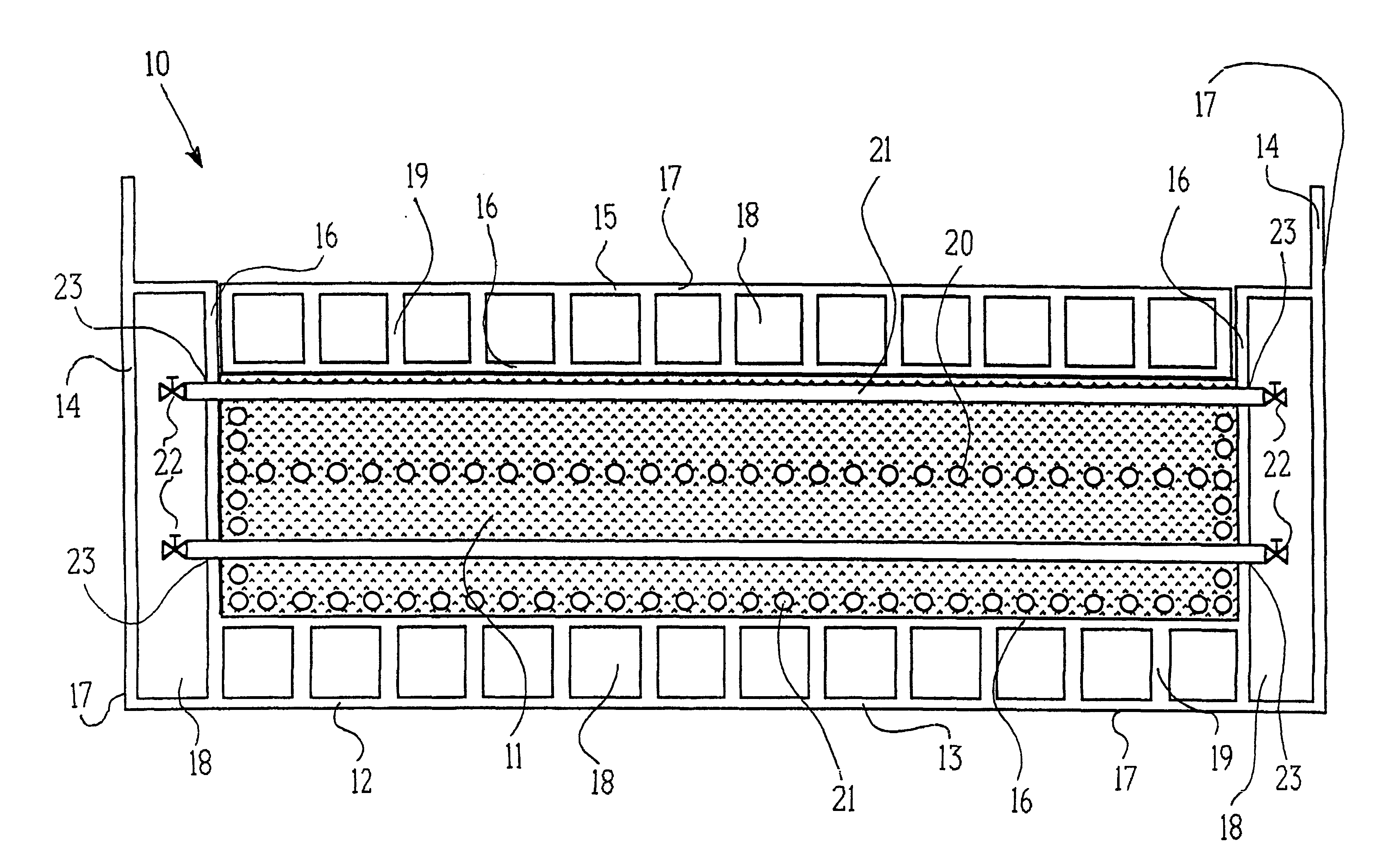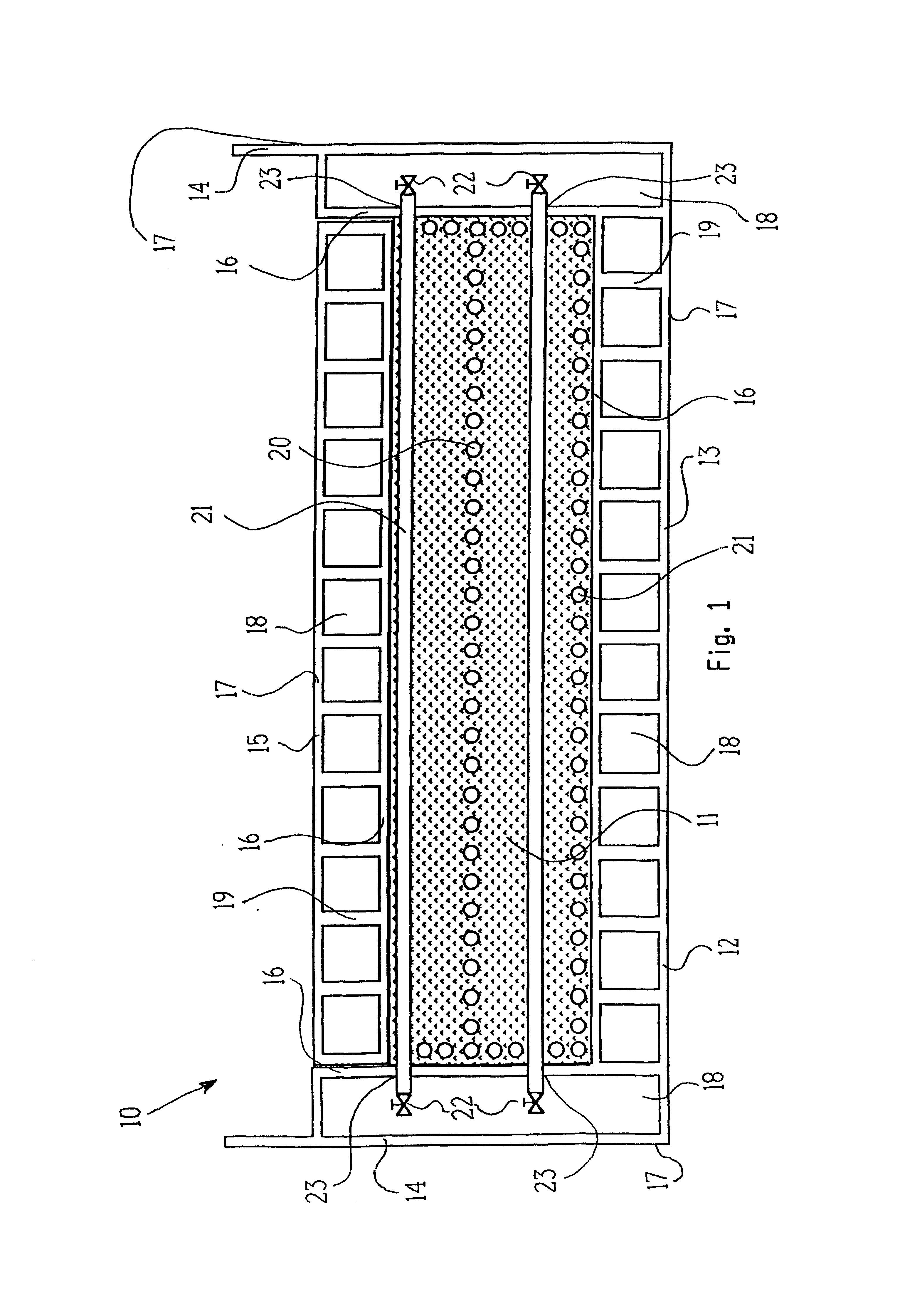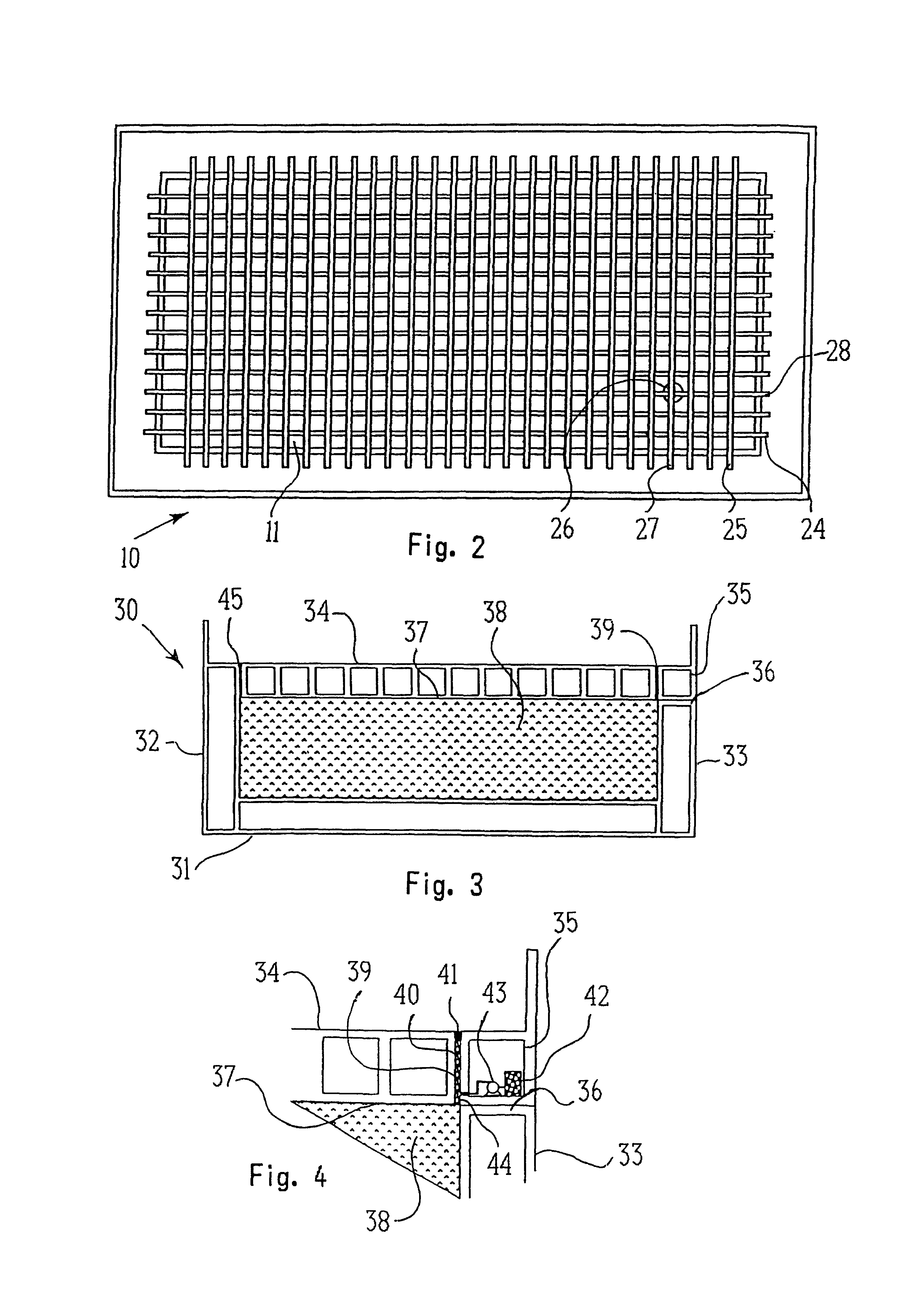Ice composite body and process for the construction thereof
a composite body and composite technology, applied in the field of ice composite bodies, can solve the problems of large quantities of dissolved gas and liquid inclusions trapped in the ice, ice to be unstable under stress, ice to tend to creep, etc., and achieve the effect of convenient maintenan
- Summary
- Abstract
- Description
- Claims
- Application Information
AI Technical Summary
Benefits of technology
Problems solved by technology
Method used
Image
Examples
Embodiment Construction
Referring to FIG. 1 there is indicated, generally at 10, in transverse section, an ice composite body according to the invention for use in the construction of fixed or floating structures located in or on water. The body 10 has an inner ice core 11, and a protective outer armour shell 12. The protective outer armour shell 12 is made from concrete material. The type of construction in concrete used is based on the method of construction of the hull of the tanker vessel "Selma" as described by Wig, Rudolph, American Society of Naval Architects, November, 1919, and referred to in detail by Turner, Colin W. R., Sea Breezes 1996, 936-944.
The protective outer armour shell 12 consists of a base section 13, side sections 14 and a separate top section 15. The top section 15 rests on the inner ice core 11 and is flee to move vertically between the side sections 14. The outer armour shell 12 has an inner wall 16 and an outer wall 17, defining a space 18 therebetween which acts as a means for ...
PUM
 Login to View More
Login to View More Abstract
Description
Claims
Application Information
 Login to View More
Login to View More - R&D
- Intellectual Property
- Life Sciences
- Materials
- Tech Scout
- Unparalleled Data Quality
- Higher Quality Content
- 60% Fewer Hallucinations
Browse by: Latest US Patents, China's latest patents, Technical Efficacy Thesaurus, Application Domain, Technology Topic, Popular Technical Reports.
© 2025 PatSnap. All rights reserved.Legal|Privacy policy|Modern Slavery Act Transparency Statement|Sitemap|About US| Contact US: help@patsnap.com



